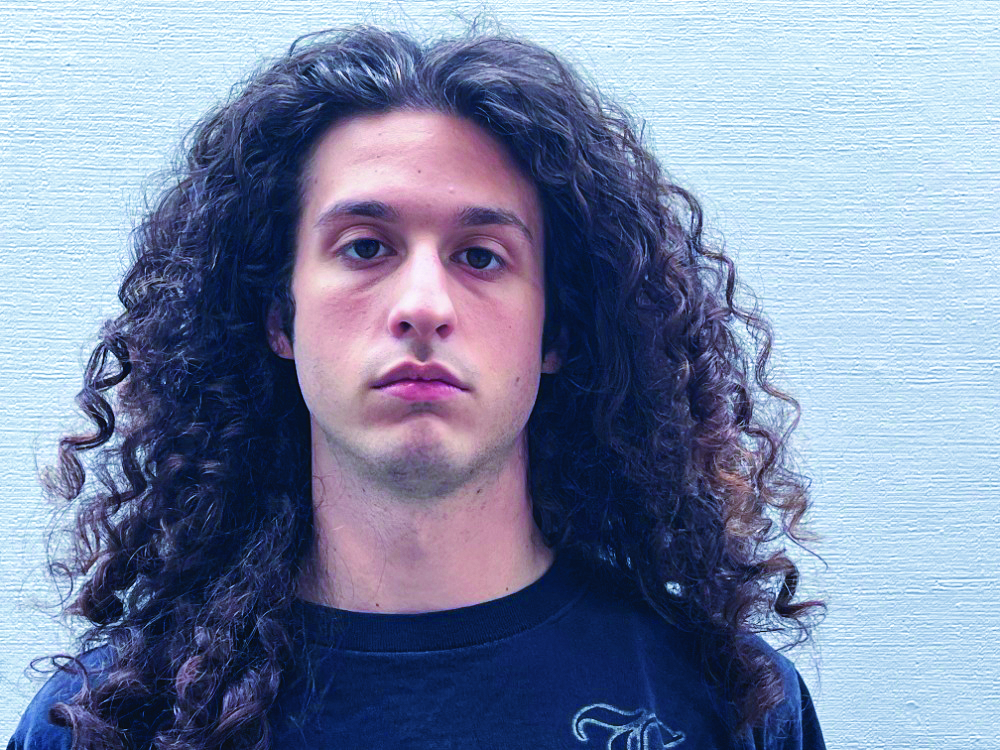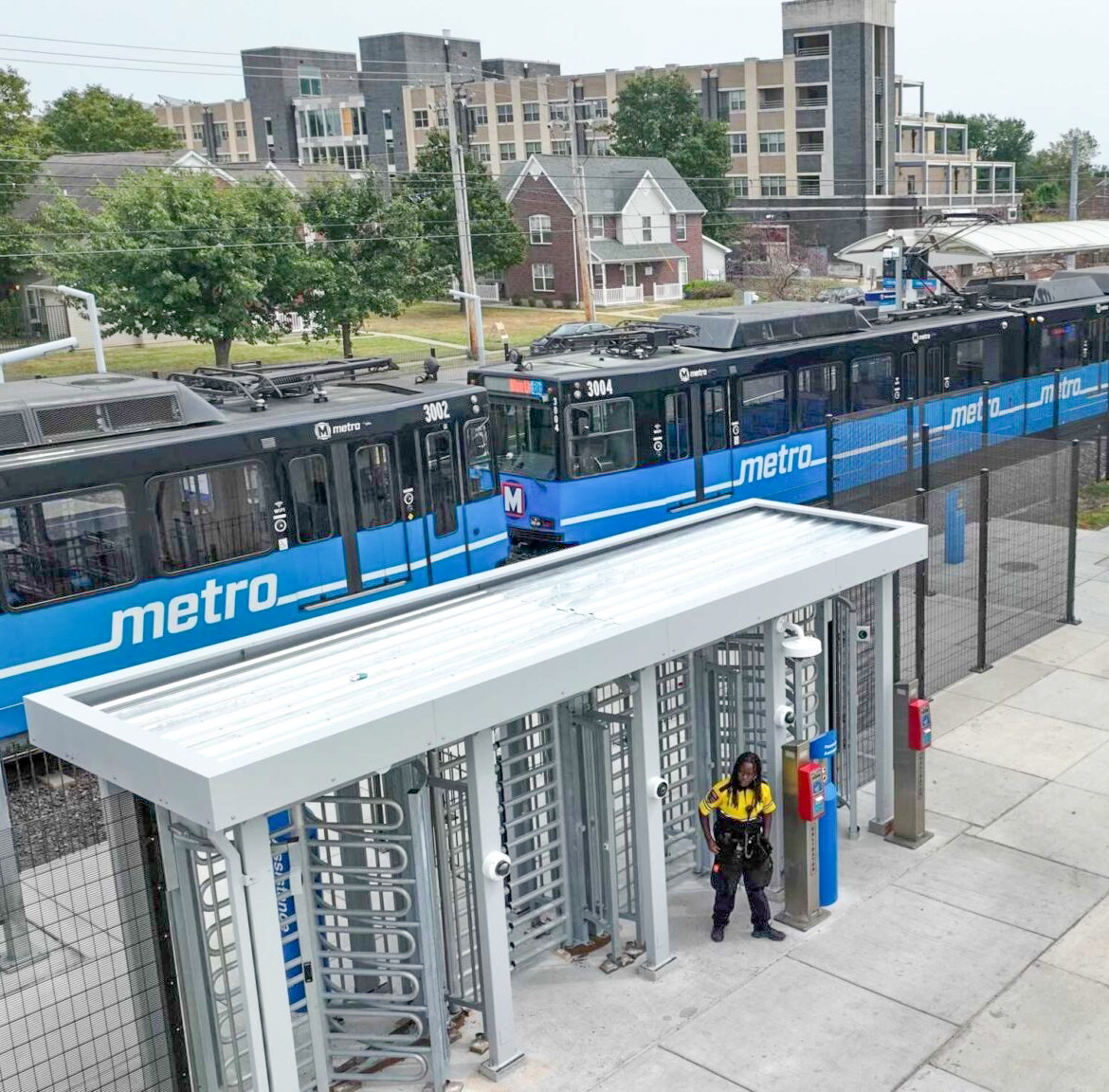
The Scene Staff
The second phase of Bi-State Development’s $52 million Secure Platform Plan for MetroLink is nearing completion. The project was initiated to bolster security, while also improving fare collection for the train.
As a Metrolink rider, the proposals make my head spin while I’m trying to make sense of them. The confusing project brings gigantic metal turnstiles, taller gates and a vast expansion of the closed-circuit TV system. It also brings increased waiting times for trains, an overbearing new security apparatus and the perception of increased safety.
For whatever reason, the project’s implementation comes before Metro’s proposed reorientation of its payment systems. Due to this, turnstiles are manned by Metro guards, who check riders’ passes manually before allowing them to go onto platforms.
Hoped to be completed by early 2026, this multimillion-dollar project allows Metro to placate those who see the system as crime-ridden and to increase fare collection, to the detriment of poorer riders. The stated goal of the Secure Platform Plan is to tackle perceived security problems. To create a positive and welcoming environment, Bi-State is erecting 10-foot fences and adding more than 900 security cameras!

The St. Louis Metro – and really the city itself – is often perceived as a hotbed of crime and illegal activity. According to Metro’s 2024 Safety Report, there were 520 incident reports (Metro security reports, not official crime reports). A fifth of them involved “crimes that passengers/employees generally consider a potential threat to their personal safety (for example, assault, homicide, rape, robbery, suicide/attempted suicide).”
It also was reported that there are approximately eight incidents on the Metro per 100,000 boardings. This means that only 0.008% of boardings result in a reported incident that may or may not involve a violent crime.
In contrast, St. Louis’ crime rate is approximately 78/1000 or 7.8%, according to data from Neighborhood Scout. Other studies indicate that on a national level, driving is much more dangerous than public transit.
There are more than 500 times more crimes committed against motorists as opposed to transit users, according to U.S. statistics compiled by Todd Litman, founder of Victoria Transport Policy Institute in British Columbia. The American Public Transportation Association also concludes that there are vastly more car deaths than deaths on public transit.
The nebulous crime issue on Metrolink has more to do with perceptions than facts. That isn’t to say that crime on the Metro is nonexistent. I’m not opposed to the reinforcement of existing security measures. However, pandering to the increasing sentiment of insecurity in our city and Metro system (often from those who don’t utilize the services) will not help.
The infrastructure changes may prove effective in collecting more fares. Scaling the new fences are like an American Ninja Warrior challenge. However, there is a question as to whether fare-enforcement measures NEED such an overhaul. Is the problem of train-hopping that prevalent?
A random survey of Metrolink riders showed a 91% rate of fare compliance, according to an audit that Allied Universal conducted for Bi-State in February 2024, which was pre-turnstile. This means that as little as 9% of Metrolink rides were unpaid – an indicator that perhaps the issue of fare evasion isn’t as pervasive as many believe.
In fact, Metro’s fiscal-year budgets show that passenger revenue increased by more than $14 Million between 2021 and 2023, following the COVID-19 plummet.
Clearly, the turnstiles are more to quell security concerns than to increase revenue. However, the economic impact falls more on the shoulders of lower-income Metrolink users. Those without the money to purchase a ticket are placed at a disadvantage.
A Via Metro STL study revealed that 80% of Metro riders make less than $50,000 a year, and 87% do not own a car. Is the investment in this program worth casting those in critical need out?
While the dream of free transit grows ever distant and untenable, the Metro will run, regardless of the 9% who don’t purchase tickets. Improving the efficacy of Metro service would do more to help the system, attracting more ridership and earning more revenue.
I may speak from the armchair, but I firmly believe that building taller metal structures won’t save the Metro or increase ridership. In fact, the first day I encountered the completed turnstiles, there was a small line forming at a gate during non-peak hours. I have also seen people miss their trains by just a few seconds while held up at the gate.
The best way to increase ridership ought to be a focus on Metrolink efficacy and the expansion of its services. (I’m still waiting for 15-minute service for the 35 bus and a Green Line.) Restricting its usage and opening it up to congestion may prove to be a hindrance in the long run. The best indicator is time, and we still have a year before the project’s end.
